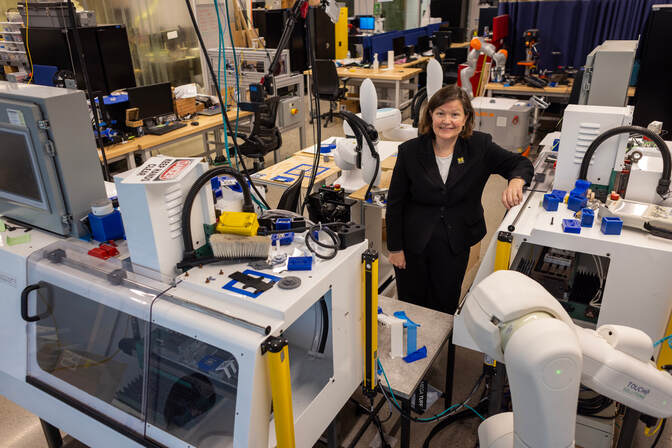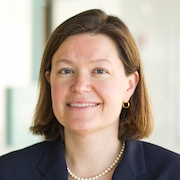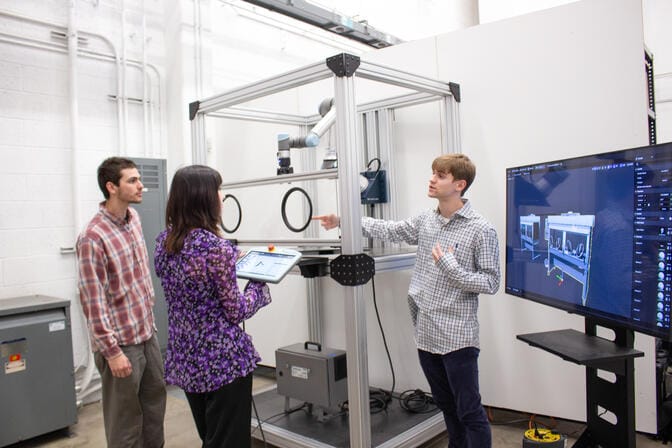
Digital twins for manufacturing: industry collaborators wanted
Focusing on precompetitive problems, such as enabling communication between digital twins, U-M and ASU are seeking industry partners for an NSF research center.

Focusing on precompetitive problems, such as enabling communication between digital twins, U-M and ASU are seeking industry partners for an NSF research center.
Experts

Ronald D. and Regina C. McNeil Department Chair of Robotics
Herrick Professor of Engineering, Professor of Robotics
Professor or Mechanical Engineering
Professor of Electrical Engineering and Computer Science
Aiming to overcome barriers that prevent digital twins from delivering on their promise to improve manufacturing, the University of Michigan and Arizona State University are inviting industrial partners to participate in a new Center for Digital Twins in Manufacturing.
An informational meeting for interested parties is to be held July 23, 1–4 p.m., and attendees can register online.

Explore the forefront of digital engineering
at Michigan Engineering
“Everyone’s building digital twins, but we’re trying to build the glue or connectivity that enables digital twins to work together—to be composable, reusable and maintainable,” said Dawn Tilbury, the Ronald D. and Regina C. McNeil Department Chair of Robotics at U-M.
“Teams in this center will work on precompetitive issues that can bring broad benefits to everyone making and using digital twins, helping expand the use of these great technologies to improve manufacturing performance, quality and uptime,” she added.
With enough industry members, the team will be able formally launch the Industry-University Cooperative Research Center, funded by the National Science Foundation (NSF). For these types of centers, the NSF contributes $1.5 million over 5 years to support administrative costs, while industry partners pay annual dues of $90,000 to fund the research projects.

The meeting will include presentations about the center, its goals and operations, and the benefits to members as well as breakout and discussion sessions to discover the topics of highest interest to potential members and identify specific industry needs.
“This meeting will be a great opportunity for potential industry partners to learn more about the vision of the center, understand the value of becoming a member, and help shape the first round of projects,” said Wenlong Zhang, an associate professor of robotics and manufacturing systems at ASU.
A digital twin is a computer model of a device that is in communication with the real device, updating itself so that it matches the state of the device it is modeling. For instance, a digital twin of a milling machine might represent the progress of a part hewn from a block of metal, checking in every tenth of a second to make sure that its model is in lockstep with the real machine. The twin can make predictions about part quality, when maintenance will be needed and more. However, lack of standardization makes digital twins difficult to implement in manufacturing.

At present, Tilbury says most digital twins in manufacturing are for single devices. If a factory has a digital twin for an entire system or line, it is likely a bespoke piece of software that has to be rewritten if a part of the system changes—for instance, if a machine is upgraded. Meanwhile, many companies are providing digital twin software for individual machines. Linking them up with twins of the previous and next machines on the line would enable better coordination both up and down the line.
The prospective center plans to come at issues in digital twins for manufacturing from several directions. They are developing generalized digital twins for certain types of machines—for instance, a 3D printer that could be modified to represent a specific machine. These twins are to be reusable, extendable and maintainable, which means they can accommodate additions to the system, represent the natural degradation of machines, and show improvement following repair or part replacements.
Other aims of the center include:
To test out ideas developed through the center and ensure that they operate as intended, U-M offers the SMART 4.0 testbed, featuring a “connected factory” of mobile robots, computer-controlled machines (CNCs) and 3D printers, connected through open process automation. ASU provides its own connected smart manufacturing system that includes robotics, programmable logic controllers (PLCs), smart sensors and RFID tracking for milling and additive manufacturing
Tilbury is also the Herrick Professor of Engineering and a professor of mechanical engineering and electrical engineering and computer science.